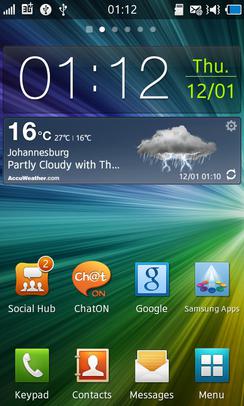
A mobile browser is a web browser designed for use on a mobile device such as a mobile phone, PDA, smartphone, or tablet. Mobile browsers are optimized to display web content most effectively on small screens on portable devices. Some mobile browsers, especially older versions, are designed to be small and efficient to accommodate the low memory capacity and low bandwidth of certain wireless handheld devices. Traditional smaller feature phones use stripped-down mobile web browsers; however, most current smartphones have full-fledged browsers that can handle the latest web technologies, such as CSS 3, JavaScript, and Ajax.
WebKit is a browser engine primarily used in Apple's Safari web browser, as well as all web browsers on iOS and iPadOS. WebKit is also used by the PlayStation consoles starting with the PS3, the Tizen mobile operating systems, the Amazon Kindle e-book reader, Nintendo consoles starting with the 3DS Internet Browser, and the discontinued BlackBerry Browser.

Windows Mobile is a discontinued mobile operating system developed by Microsoft for smartphones and personal digital assistants.

There are two Norwegian language editions of Wikipedia: one for articles written in Bokmål or Riksmål, and one for articles written in Nynorsk or Høgnorsk. There are currently 635,763 articles on the Norwegian Wikipedia edition in Bokmål/Riksmål, and 170,850 articles on the Nynorsk edition.
Object hyperlinking is a term that refers to extending the Internet to objects and locations in the real world. Object hyperlinking aims to extend the Internet to the physical world by attaching tags with URLs to tangible objects or locations. These object tags can then be read by a wireless mobile device and information about objects and locations retrieved and displayed.
Sorenson Squeeze was a software video encoding tool used to compress and convert video and audio files on Mac OS X or Windows operating systems. It was sold as a standalone tool and has also long been bundled with Avid Media Composer.
SM Town is a musical collective for the recording artists under South Korean entertainment company SM Entertainment.

The mobile web comprises mobile browser-based World Wide Web services accessed from handheld mobile devices, such as smartphones or feature phones, through a mobile or other wireless network.
The online service imeem was a social media website where users interacted with each other by streaming, uploading and sharing music and music videos. It operated from 2003 until 2009 when it was shut down after being acquired by MySpace.

Wireless Application Protocol (WAP) is a now obsolete technical standard for accessing information over a mobile cellular network. Introduced in 1999, WAP allowed at launch users with compatible mobile devices to browse content such as news, weather and sports scores provided by mobile network operators, specially designed for the limited capabilities of a mobile device. The Japanese i-mode system offered another major competing wireless data standard.

High Capacity Color Barcode (HCCB) is a technology developed by Microsoft for encoding data in a 2D "barcode" using clusters of colored triangles instead of the square pixels conventionally associated with 2D barcodes or QR codes. Data density is increased by using a palette of 4 or 8 colors for the triangles, although HCCB also permits the use of black and white when necessary. It has been licensed by the ISAN International Agency for use in its International Standard Audiovisual Number standard, and serves as the basis for the Microsoft Tag mobile tagging application.

Bada was a mobile operating system developed by Samsung Electronics for devices such as mid- to high-end smartphones and tablet computers. The name is derived from "바다 (bada)", meaning "ocean" or "sea" in Korean. All phones running Bada were branded with the name Wave, unlike Samsung's Android devices which are branded as Galaxy.

www.handy-games.com GmbH is a German video game developer and publisher based in Giebelstadt. In July 2018, the company was acquired by THQ Nordic.
iCE is the brand name used for a family of low-power field-programmable gate arrays (FPGAs) produced by Lattice Semiconductor. Parts in the family are marketed with the "world's smallest FPGA" tagline, and are intended for use in portable and battery-powered devices, where they would be used to offload tasks from the device's main processor or system on chip. By doing so, the main processor and its peripherals can enter a low-power state or be powered off entirely, potentially increasing battery life.
Viaden Media is a software development company. It was founded in 2001 by the Belarusian businessman and investor Viktor Prokopenya. The company has grown into one of the largest producers of applications for iPhone and iPad in the Central and Eastern Europe region. In 2012, it was acquired by Teddy Sagi, the co-founder of Playtech. Later the company was divided into Sport.com and Skywind Group.







